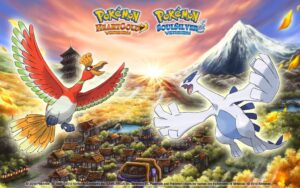Since its release in 2020, Ghost Of Tsushima has sold over 8 million copies. Sucker Punch’s action-adventure game put you in the armor of a samurai named Jin Sakai. Taking place during the first Mongol invasion of Tsushima Island during the 13th century, Jin and his Uncle Lord Shimura – who in real life were both not present during the first invasion, as the Sakai samurai clan did not exist until the 14th century, take on the Mongols alongside a small group of samurai. Though the game does take a few liberties with Japanese history, it contains one of the most beautifully cinematic features in any game: Kurosawa Mode.
The mode is named after the iconic and acclaimed Director Akira Kurosawa whose films Seven Samurai, Yojimbo, and others influenced cinema over a period of decades. His film Seven Samurai is one of George Lucas’ favorites, “I had never seen anything that powerful or cinematographic,” said Lucas in an interview with IGN in 2004. “The emotions were so strong that it didn’t matter that I did not understand the culture or the traditions. From that moment on, Kurosawa’s films have served as one of my strongest sources of creative inspiration.”
Kurosawa directed 33 films over a span of 50 years, and won numerous awards for his films including the Academy Award for Best International Feature – Dersu Uzala in 1976, and the 1982 Golden Lion for Lifetime Achievement. Kurosawa passed away in 1998. Decades after Kurosawa’s passing, Sucker Punch wanted to honor the late filmmaker by including a visual option that shares his name.


In an interview with Entertainment Weekly, Creative Director Jason Connell said “We have this great game that transports people back to feudal Japan and Akira Kurosawa was one of our reference guides, especially early on, about how we wanted it to feel. As we got closer and closer to making that a reality, we were like, ‘What do we call this special mode that we created, this black-and-white throwback?’ We threw out a bunch of different words and we thought, ‘What would be awesome would be if we could call it Kurosawa Mode.’ In order to do that, we felt that we needed to reach out to the estate and see if that’s something they’d be interested in. We sent a short video showing what it generally looks like, and what it feels like.”
The mode, which can be applied at any time, takes away all of Ghost Of Tsushima’s colors and replaces them with black and white, even adding film grain to give the game a true Kurosawa look and feel. The team also amplified the sound of the wind which guides Jin throughout the game instead of an arrow to make it feel more cinematic, and in line with the aesthetic of actual samurai movies during Kurosawa’s career. Activate Kurosawa Mode, use Japanese audio, and you’re getting the full Kurosawa experience, which compels you to play the whole game again through this new lens.


While traveling down the island’s many roads and through its many fields, you will encounter Mongols and other enemies who will challenge you to a duel. Playing these in Kurosawa modes adds a level of cinematic realism and even adds additional tension because like the Kurosawa films themselves anytime a sword even comes close to being drawn, the black and white aesthetic makes things feel more personal and old school. Every unsheathing of your sword carries with it an immense and added history that the Kurosawa films carry. I makes you feel more powerful as if you have the entire weight and force of the island of Tsushima and the entire country of Japan behind you. Every slash, every swipe, every kill is much more memorable when displayed through the filter that is Kurosawa mode. It brought me back to when I saw Seven Samurai for the first time when I was a film student in college over a decade ago.
Facing off against an invader like the Mongols in Kurosawa mode also adds that tiny extra level of risk because things are not in color so you have to read your opponents even more closely. When the game is colorized you can make out every piece of equipment and see your opponent’s sheathed sword more clearer. But when all you have are shades of black and white, then you must be on much higher alert. It’s kill or be killed during those moments, and the last thing you want is to not pay attention. Kurosawa Mode adds another branch, another layer of Japanese history to the game that ties into its cinematic heritage. Kurosawa Mode is a thing of beauty, and it’s great to see other samurai games, like Trek to Yomi, adopting a similar style that pays tribute to a legend from gaming’s neighboring medium of cinema.
- amazon prime gaming
- axie infinity
- Casino Games
- coingenius
- Dualshokers
- EA Sports
- Evil Geniuses
- Gaming
- gaming headset
- gaming pc
- Ghost of Tsushima
- madden nfl
- Nintendo
- Online casino games
- Originals
- pc games
- plato
- plato ai
- plato data intelligence
- plato game
- plato gaming
- platodata
- platogaming
- playstation
- prime gaming
- Team SoloMid
- xbox
- zephyrnet












